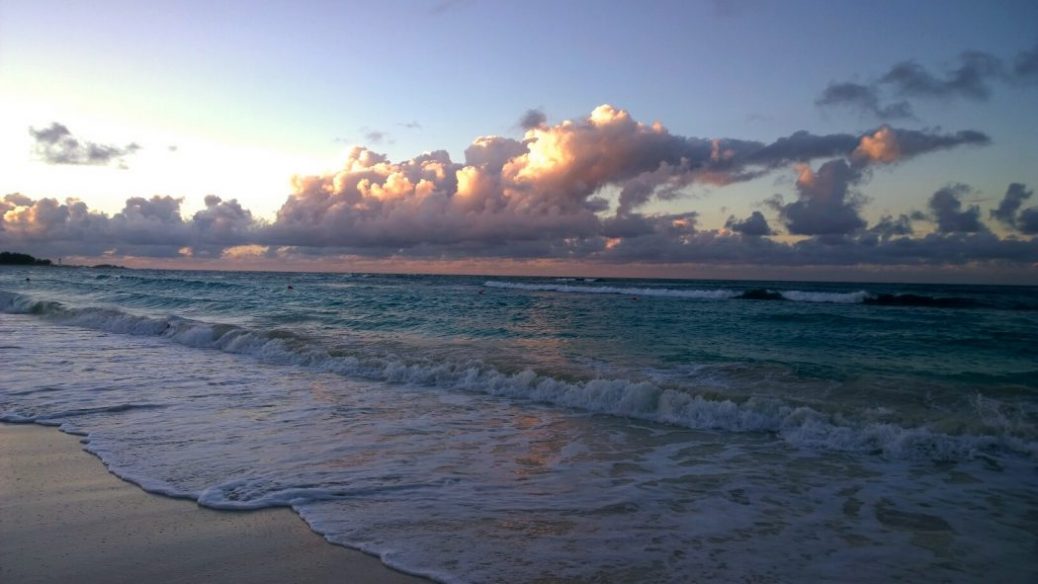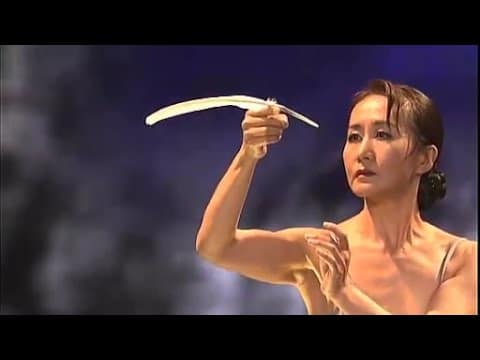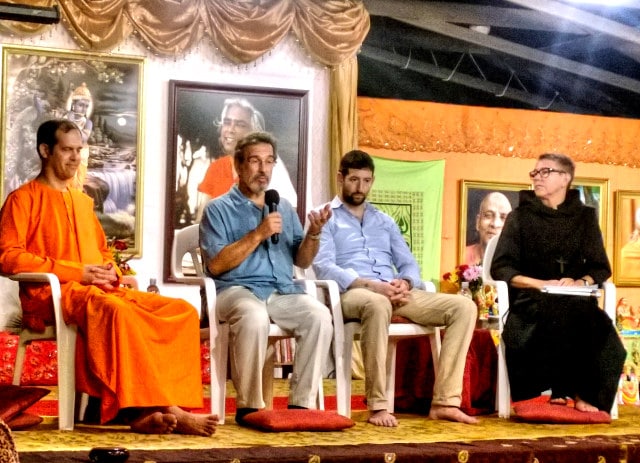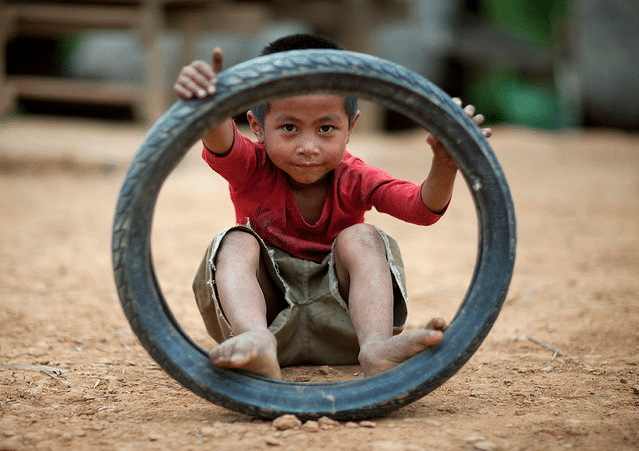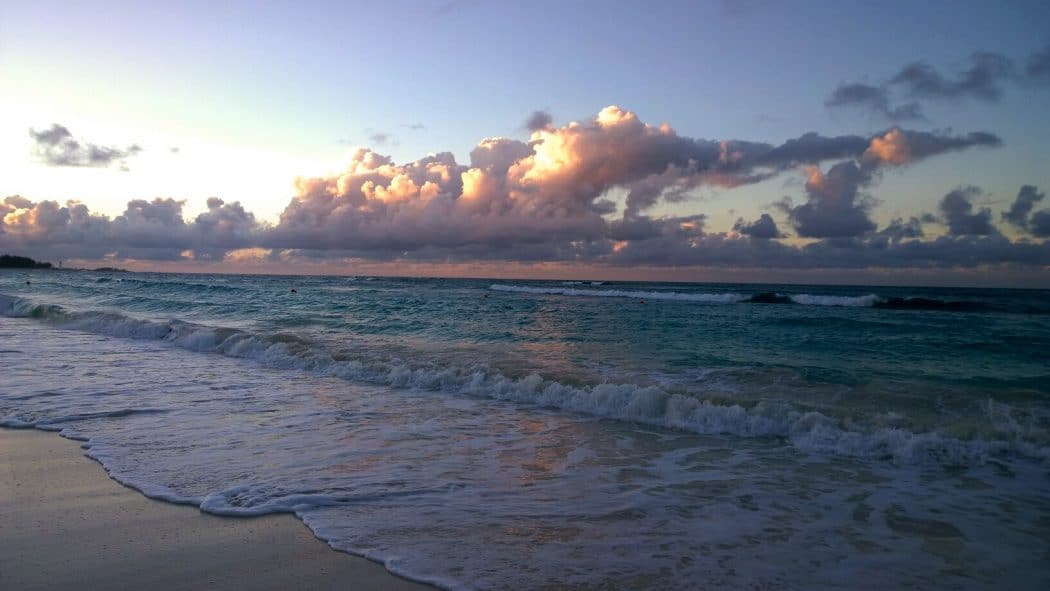
Photo by Chani Krech
I have a love/hate relationship with water.
It is absolutely necessary for life, and a cold glass of water can be wonderfully refreshing. In fact, I prefer a glass barrier between me and cold water. I do not want cold water to touch any part of my body except my mouth and the organs associated with digestion. This is beginning to become a problem, however. You see, I have a four year old daughter who loves swimming, in any kind of water, and wants me to swim with her.
Part of the problem is that I am rarely hot. It is common for me to be comfortable in long pants in the 90 degree heat. An added concern is that I am often cold. This is more of a problem than you might think. I’m Canadian. It’s cold eight months a year here! Many of my friends have compared me to Robert Service’s fictional character Sam McGee who is cold his entire life and only gets warm when he is finally cremated.

The other day it was warm and my daughter, Hannah, and I decided to go to the beach near my Mom’s cottage. My aqua-daughter wanted to hit the water as soon as she could. For safety reasons, I knew I was going to have to get in the water with her.
Feeling the water with my foot, I decided that I wouldn’t actually swim. Instead, I would use my height to my advantage. I could successfully walk around the entire roped off swimming area without getting wet above my bathing suit.
After a couple of minutes, however, my daughter looked at me with her big blue eyes and an inviting smile and asked me if I would play with with her. My face was instantly transformed. I looked like the character from that Edvard Munch painting The Scream and inside my head I was doing my best Kurtz:
The horror, the horror…
What to do? This is a question that comes up quite often: How do I know what needs doing? When I am confronted with the question of what needs doing, I often use Naikan reflection as a method for deciding what to do and Morita as the method for accomplishing the task. Essentially, this means looking at the situation, not only from your own perspective, but from someone else’s perspective as well and then making a decision on what needs doing based on that information. By looking at the needs of others, not merely our own, we can act in a manner that most effectively addresses the needs of the situation, instead of simply our own desires.
Naikan also reminds me that my actions will effect the people and things around me.

I asked myself what I had given back. I had put my daughter’s bathing suit and sunscreen on her. Nothing else. Immediately, the data showed a large discrepancy in what I had given and received. I must admit, I really didn’t reflect long on the third question. I knew that if I didn’t go in the water I would be creating difficulties for my daughter.
From the data I had gathered in my 20 seconds of reflection, what needed to be done was to get in the water.
At that moment I noticed something interesting about my legs. The feelings of intense cold on my legs was gone. In fact, the lower half of my body was now quite comfortable. This reminded me of one of principles developed by psychiatrist Shoma Morita: feelings fade if simply left as they are. In my case, my body/mind had naturally adjusted to the water temperature. I recognized that this would probably be true for the top half of me, if I didn’t die of hypothermia first. There was only one way to know for sure and that was to get in.
From what I have seen, there are two types of people when it comes to getting in cold water. The first kind wades into the water. They walk into the water gradually experiencing small jolts of cold/pain on every surface of warm, dry flesh as they inch into the water. It is something like death by a thousand cuts.
This is my own method of choice.
The second type of person just dives in. A whole lot of cold all at once. Suddenly, a moment of realization; by slowly wading into the water, I was actually prolonging the amount of time I was suffering. If I just dove into the water, it would all be over.
Perhaps this is also what many of us do in our daily lives. Instead of just doing something, getting it over with and ending the suffering, we put things off and prolong our misery.
The moment to dive was here. Accepting the feelings of fear and dread, I dove. The cold water engulfed my body as I disappeared from view. When I came to the surface, I was cold; but moment by moment, my body and mind adjusted. I did not fight the cold, there was no point.
It was an uncontrollable part of life that needed to be accepted.
Instead I began working with what I could control, my behavior, and just kept moving. Hannah and I splashed and dove. We were having so much fun I wasn’t focused on the feelings of cold anymore. After about half an hour I realized I wasn’t cold anymore; but it didn’t really matter. Far more important to me was the smile on my daughter’s face and the fact that I was doing what needed to be done.
What I have written about here is by no means special. Millions of men and women throughout the world take their children to beaches and dive into cold water, probably much colder than the tepid water I was in. Still, it is a gift to have the skills to be ordinary.
Without the methods I learned from the ToDo Institute (Morita, Naikan and CL), I am not sure that I would have gotten in the water. I probably would have just followed my feelings and walked around the swimming area at the beach. Instead I got the chance to be an ordinary guy swimming with his daughter.
The last part of the story happened almost ten hours later. I was lying on my daughter’s bed reading her bedtime stories. At the end I asked her what her favorite part of the day was. She said going swimming with me.
What a gift — an ordinary day at the beach.
Polar Bear: Photo by Arturo de Frias Marques – Own work, CC BY-SA 4.0, https://commons.wikimedia.org/w/index.php?curid=34567165
Water Droplet: Photo by José Manuel Suárez, CC BY 2.0, https://commons.wikimedia.org/w/index.php?curid=4602887
Beach Cottage: Photo by Lindley Ashline (CC Flickr)
Tags: anxiety Professional Members
